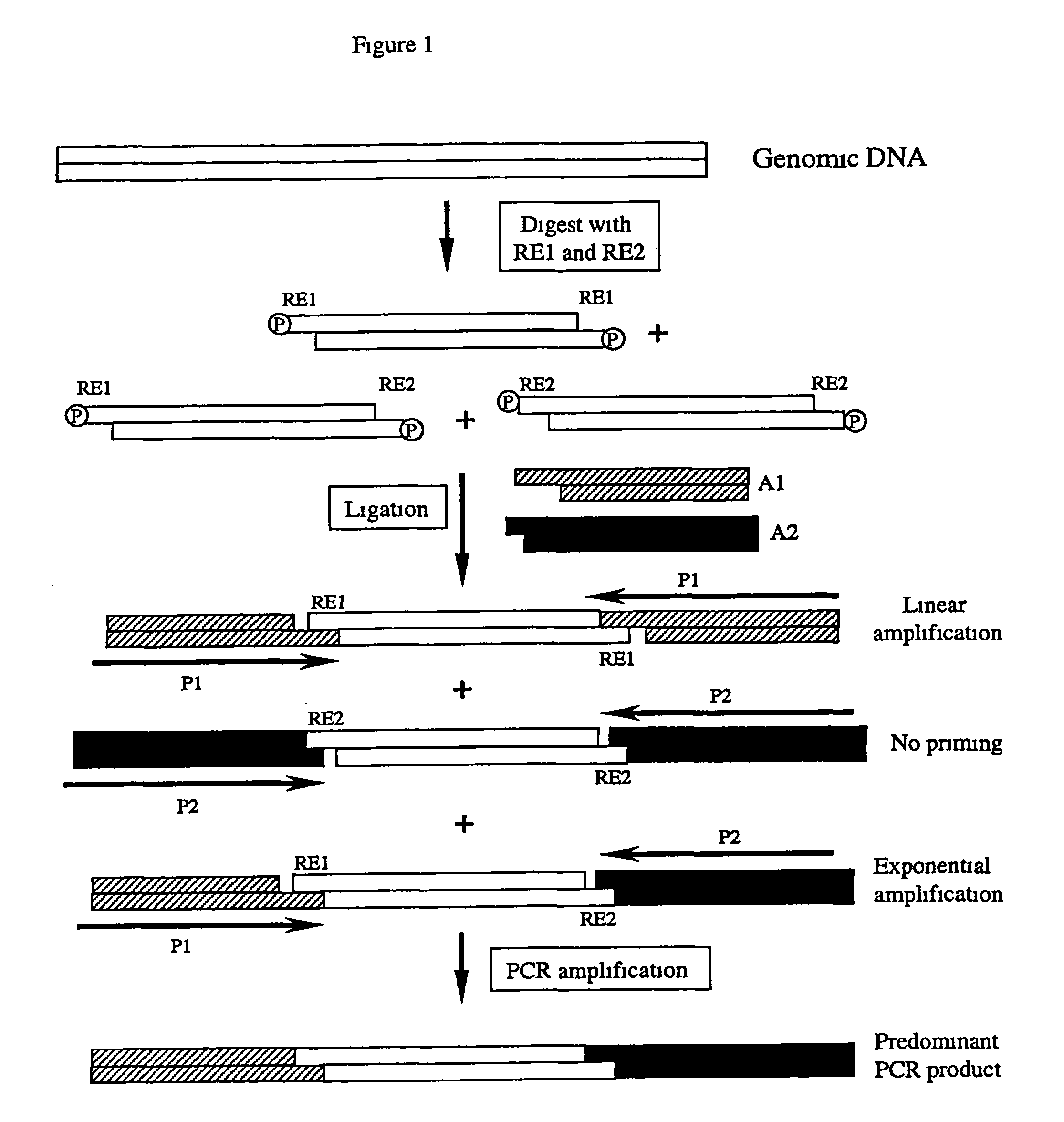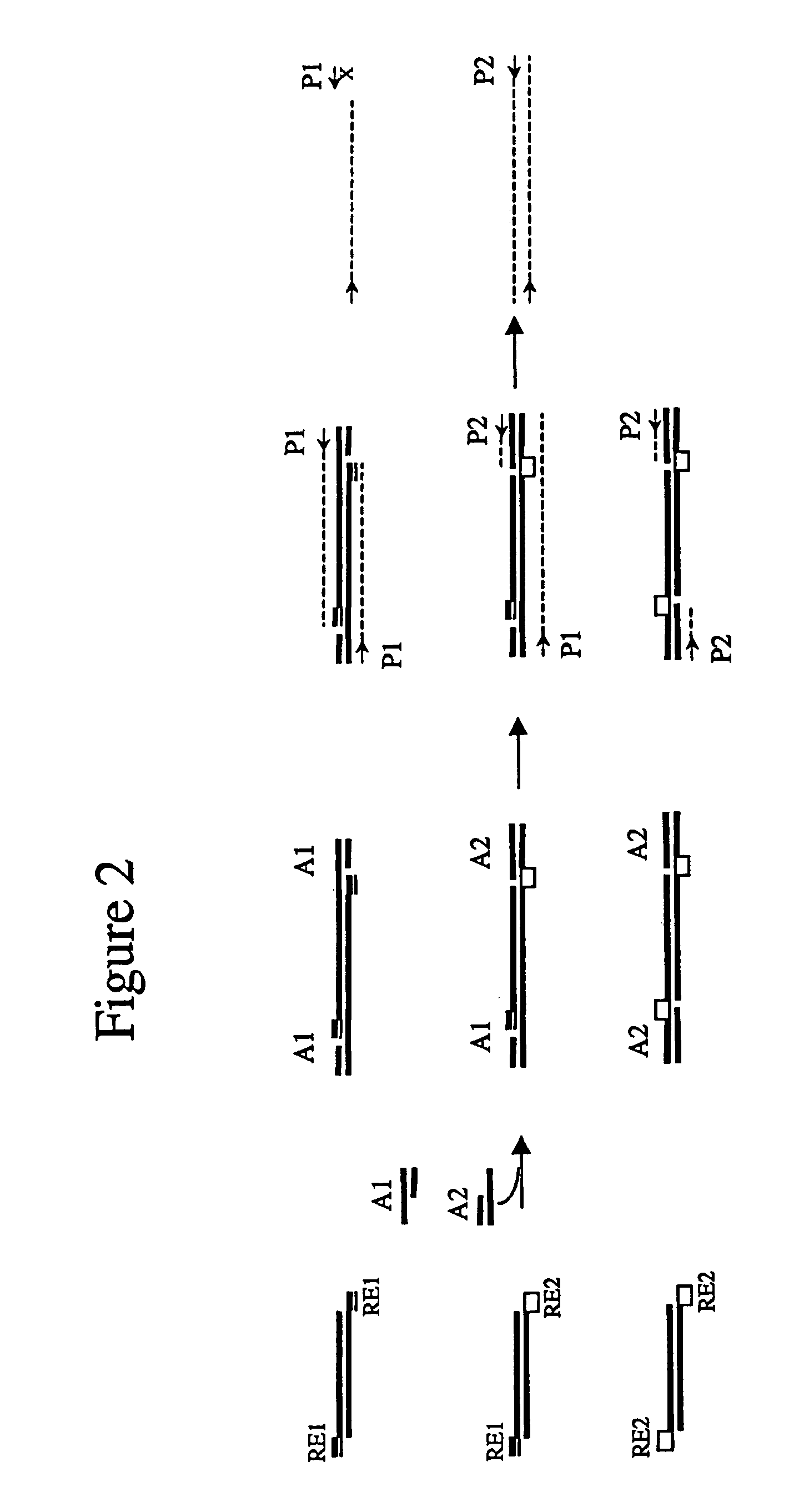Complexity management of genomic DNA
a technology of complexity management and genomic dna, applied in the field of complexity management of genomic dna, molecular biology and genetics, can solve problems such as affecting the complexity of genomes, and achieve the effect of managing or reducing the complexity of nucleic acid samples
- Summary
- Abstract
- Description
- Claims
- Application Information
AI Technical Summary
Benefits of technology
Problems solved by technology
Method used
Image
Examples
example
Step 1. Restriction Enzyme Digestion of Genomic DNA
[0089]2 μg human genomic DNA was digested with 20 units of EcoR I (New England Biolabs) and 20 units of Sau3A I in 80 μl 1×NEB buffer 4 with 1×BSA (NEB) by 37° C. overnight incubation. The enzymes were inactivated at 65° C. for 20 minute.
Step 2. Adaptor Ligation
[0090]500 ng genomic DNA digested in step 1 was ligated to 30 pmol EcoR I adaptors (5′-AGTATAAGGGGTTCG-3′ (SEQ ID NO 1) and 5′-phosphate-AATTACGAACCCCTTATACT-3′ (SEQ ID NO 2)), which leaves a 1 nucleotide gap between the 3′ adaptor and the restriction fragment, and 300 pmol Sau3A I adaptors (5′-ATCGCCTTATAGTGAGTCG-3′ (SEQ ID NO 3) and 5′-CGACTCACTATAAGGC-3′ (SEQ ID NO 4)), which leaves a 1 nucleotide gap between the 5′ end of the adaptor and the restriction fragment, with 4000 units of T4 Ligase (NEB) in 1×T4 Ligase buffer (NEB) at 16° C. for overnight. The ligase was inactivated by incubation at 65° C. for 10 minutes.
[0091]Because the adaptors were designed to leave a gap in...
PUM
| Property | Measurement | Unit |
|---|---|---|
| temperature | aaaaa | aaaaa |
| pH | aaaaa | aaaaa |
| temperature | aaaaa | aaaaa |
Abstract
Description
Claims
Application Information
 Login to View More
Login to View More - R&D
- Intellectual Property
- Life Sciences
- Materials
- Tech Scout
- Unparalleled Data Quality
- Higher Quality Content
- 60% Fewer Hallucinations
Browse by: Latest US Patents, China's latest patents, Technical Efficacy Thesaurus, Application Domain, Technology Topic, Popular Technical Reports.
© 2025 PatSnap. All rights reserved.Legal|Privacy policy|Modern Slavery Act Transparency Statement|Sitemap|About US| Contact US: help@patsnap.com



